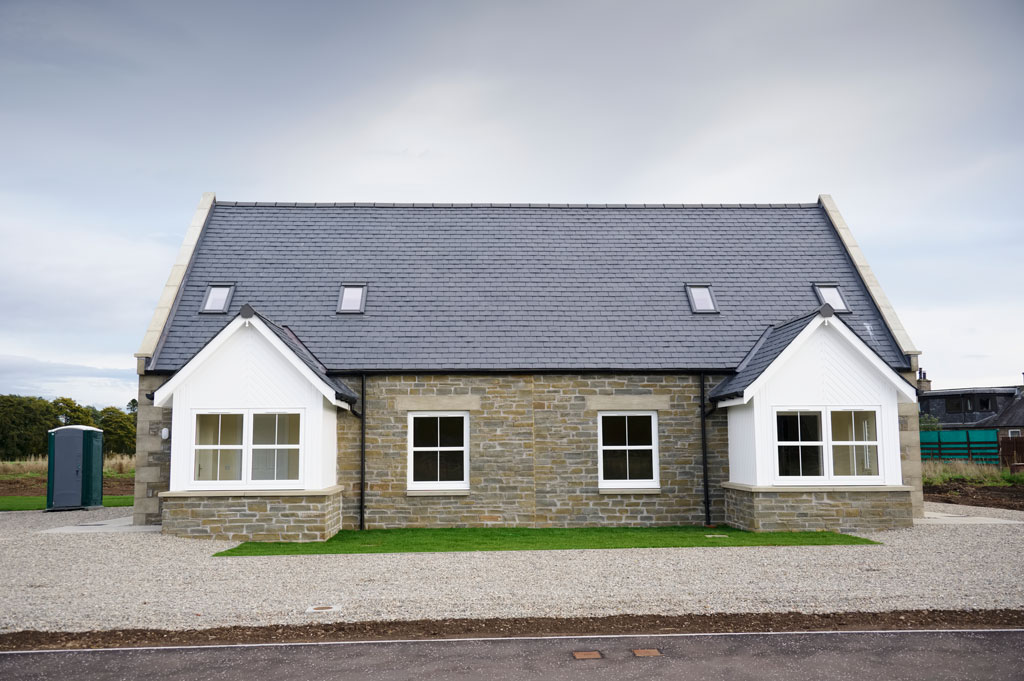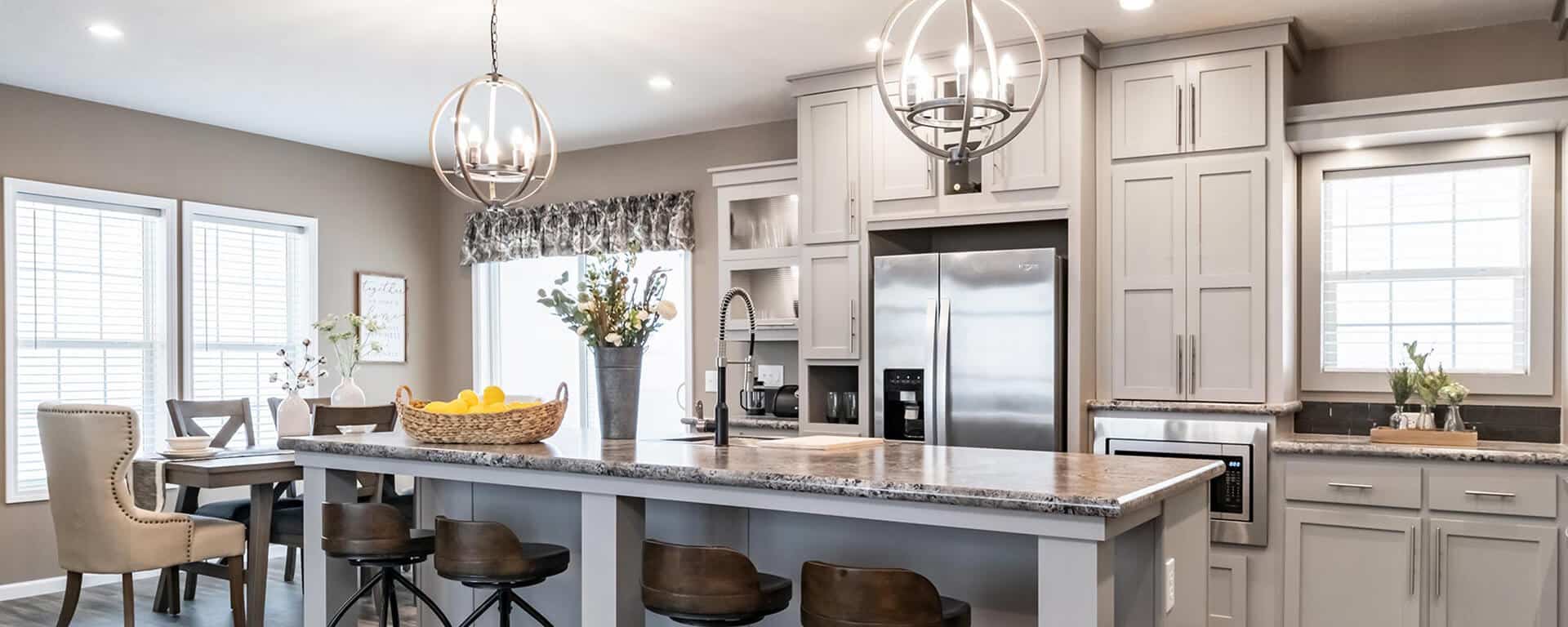How Long Do Manufactured Homes Last?
Smartsites webuser
may 1, 2024

Manufactured homes have become a popular choice for affordable housing across the United States. Their appeal lies not only in their cost-effectiveness but also in the flexibility they offer homeowners. A key question many prospective buyers and current owners ask is: How long do manufactured homes last? This blog post explores the lifespan of these homes and the factors that influence their durability.
Construction and Material Quality
Manufactured homes, commonly referred to as mobile homes, are built in a factory setting under controlled conditions before being transported to their permanent locations. This method of construction ensures that they are built using consistent techniques and meet strict federal standards set by the U.S. Department of Housing and Urban Development (HUD). The quality of materials used plays a crucial role in the longevity of manufactured homes. High-quality materials can withstand the rigors of transport and the elements, contributing to a longer lifespan.
The construction standards have significantly improved since the introduction of the HUD Code in 1976. Modern manufactured homes are now equipped with features such as higher-grade insulation, advanced roofing materials, and durable siding. These improvements have enhanced their ability to withstand adverse weather conditions, thereby extending their life expectancy.
So how long do manufactured homes last? Generally, a well-built manufactured home using superior materials can last between 30 to 55 years, depending on maintenance and environmental factors.
Maintenance and Upkeep
The longevity of a manufactured home is heavily influenced by how well it is maintained. Regular maintenance is crucial for prolonging the life of any home, and manufactured homes are no exception. Homeowners should ensure that their homes are inspected annually by professionals to check for issues such as water leaks, structural integrity, and the condition of the heating, ventilation, and air conditioning systems.
Key maintenance tasks include resealing windows and doors, checking the roof for leaks or damage, and ensuring that the home’s foundation is secure and level. Skirting on manufactured homes also plays a vital role in protecting the underside from weather and pests, and should be kept in good condition. Preventative maintenance not only helps in extending the lifespan of the home but also in preserving its value and ensuring the safety and comfort of its occupants.
Environmental Factors
The environment where a manufactured home is located significantly affects its durability. Homes placed in areas with extreme weather conditions such as heavy snow, hurricanes, or high humidity levels face increased stress that can accelerate wear and tear. For instance, exposure to excessive moisture can lead to mold growth and structural damage, while extreme heat can cause materials to expand and contract, potentially weakening connections and the integrity of the home.
To mitigate these environmental impacts, it’s important to choose a home designed for the specific climate of the area. Homes in hurricane-prone areas should be equipped with hurricane straps to help secure the roof to the walls during strong winds. Additionally, proper site preparation, including adequate drainage and the use of protective coverings, can help protect the home from environmental damage.
Technological and Design Innovations
Advancements in technology and design are also contributing to the increased lifespan of manufactured homes. Manufacturers are continually integrating new technologies that improve the structural strength and efficiency of these homes. Energy-efficient windows, pressure-treated lumber, and better sealing techniques are becoming standard, helping to reduce the risk of damage and the need for repairs.
Furthermore, modern design trends are leading to more robust constructions. For example, pitched roofs are increasingly common over flat roofs, as they offer better water runoff, reducing the likelihood of leaks. Innovative foundation systems that elevate the home can also help reduce moisture-related issues and enhance stability.
The ongoing improvements in construction techniques, materials, and technology not only ensure that manufactured homes can meet the needs of their owners but also significantly extend their feasible lifespan. As the industry continues to evolve, it is likely that these homes will become even more durable and capable of providing safe, comfortable living for decades.
Resale Value and Market Trends
The resale value of manufactured homes, like any property, is influenced by their perceived durability and the condition they are maintained. As the lifespan of these homes increases due to improvements in construction and materials, so does their potential resale value. Prospective buyers are more likely to invest in a manufactured home when they are confident that it will last a long time and require minimal unexpected repairs.
Market trends also show a growing acceptance and demand for manufactured homes, driven by their affordability and improved quality. This shift is likely to further stabilize their resale value. Homeowners can maximize this potential by keeping their homes up-to-date with the latest improvements and ensuring regular maintenance. It’s also beneficial to document all upgrades and repairs, as this information can significantly influence buyers’ decisions and contribute to a higher resale value.
Impact of Proper Installation
The initial installation of a manufactured home is a critical factor that affects its durability. Proper installation involves ensuring the home is correctly sited and balanced on a solid foundation. Missteps in this phase can lead to structural issues that may not only require costly repairs but also shorten the home’s lifespan.
It is crucial to work with skilled professionals who follow the manufacturer’s guidelines and local building codes. The foundation should be designed to suit the specific soil and climatic conditions of the area. For instance, using a concrete foundation in areas susceptible to frost can prevent heaving and settling. Additionally, making sure that the home is level can prevent internal structural stress and aid in the efficient operation of doors and windows.
Regulatory Compliance and Safety Standards
Manufactured homes are subject to federal, state, and local regulations that ensure they meet safety and construction standards. Compliance with these regulations is not only mandatory but beneficial for the longevity of the home. These standards cover a wide range of requirements, from fire resistance to wind and seismic safety, which significantly influence the structural integrity and lifespan of manufactured homes.
Furthermore, as regulations evolve to incorporate more stringent safety and efficiency standards, manufacturers must adapt their designs and construction methods. This ongoing evolution means that newer manufactured homes are likely to be more durable and safer than ever before. Homeowners should stay informed about changes in regulations to ensure that any modifications or upgrades to their homes are compliant and contribute to their long-term viability.
Future Prospects and Sustainability
The future of manufactured homes looks promising as trends toward sustainability and green building practices gain momentum. Manufacturers are increasingly using eco-friendly materials and processes that not only reduce the environmental impact but also enhance the homes’ durability. Features like solar panels, sustainable insulation materials, and energy-efficient appliances are becoming more common and can extend the life of these homes by reducing the wear and tear associated with traditional energy sources.
Moreover, as more people recognize the benefits of manufactured homes in terms of affordability, flexibility, and efficiency, the industry is poised to innovate further. These innovations will likely continue to improve the quality and lifespan of manufactured homes, making them an even more attractive option for a wide range of buyers.
Adaptability and Modernization
One of the remarkable aspects of manufactured homes is their adaptability. Homeowners can choose to upgrade or remodel their homes as needed to meet changing family needs or personal tastes. This flexibility not only makes manufactured homes a practical long-term housing solution but also contributes to extending their usability. Upgrades such as adding additional insulation, updating plumbing fixtures, or modernizing interiors can significantly improve both the function and aesthetic appeal of the home, while also addressing any wear that might accumulate over the years.
Community and Lifestyle Benefits
The setting of a manufactured home can also impact its longevity and the quality of life for its residents. Many manufactured homes are situated in specially designed communities that provide a supportive and engaging environment. These communities often offer amenities like community centers, playgrounds, and maintenance services, which not only enhance the lifestyle of residents but also help in maintaining the homes themselves. Living in a community designed to support manufactured homes can ensure proper infrastructure and community management, which aids in preserving the condition of the homes.
Insurance and Protection
Investing in the right insurance coverage is crucial for protecting the value and longevity of a manufactured home. Homeowners should ensure they have comprehensive coverage that includes protection from natural disasters, theft, and other potential damages. Proper insurance not only provides financial protection but also peace of mind, allowing homeowners to enjoy their homes without worrying about unforeseen events. It’s essential to review and update insurance policies regularly to reflect any upgrades or changes to the home or its value.
Expert Advice and Resources
Lastly, accessing expert advice and utilizing available resources can play a significant role in extending the lifespan of a manufactured home. Many associations and organizations offer guidance and support to manufactured home owners. These resources can be invaluable for learning about best practices in maintenance, renovation, and even legal issues related to home ownership. Engaging with these resources and connecting with other homeowners can provide insights and tips that are not readily available elsewhere.
Each of these factors plays a crucial role in determining how long a manufactured home will last. By understanding and addressing these aspects, homeowners can not only ensure a long lifespan for their manufactured homes but also enhance their living experience and investment value. The continuous advancements in construction technology and the increasing focus on sustainability are set to further boost the durability and appeal of manufactured homes in the housing market. However, getting started is easy so don’t hesitate.
As you consider the benefits and possibilities of owning a manufactured home, remember that the longevity of your home is significantly influenced by the care and attention you provide. By understanding and actively engaging in the maintenance and improvement of your home, you can ensure it remains a comfortable and valuable residence for many years.
At Ignite MHC, we are dedicated to helping you find a home that suits your lifestyle and budget. We offer a range of high-quality manufactured homes in housing community settings that are designed to enhance your living experience. Let us help you discover the convenience and comfort of modern manufactured living. Visit our website to learn more about our properties, and contact us today to find your dream home and start your journey with us.
